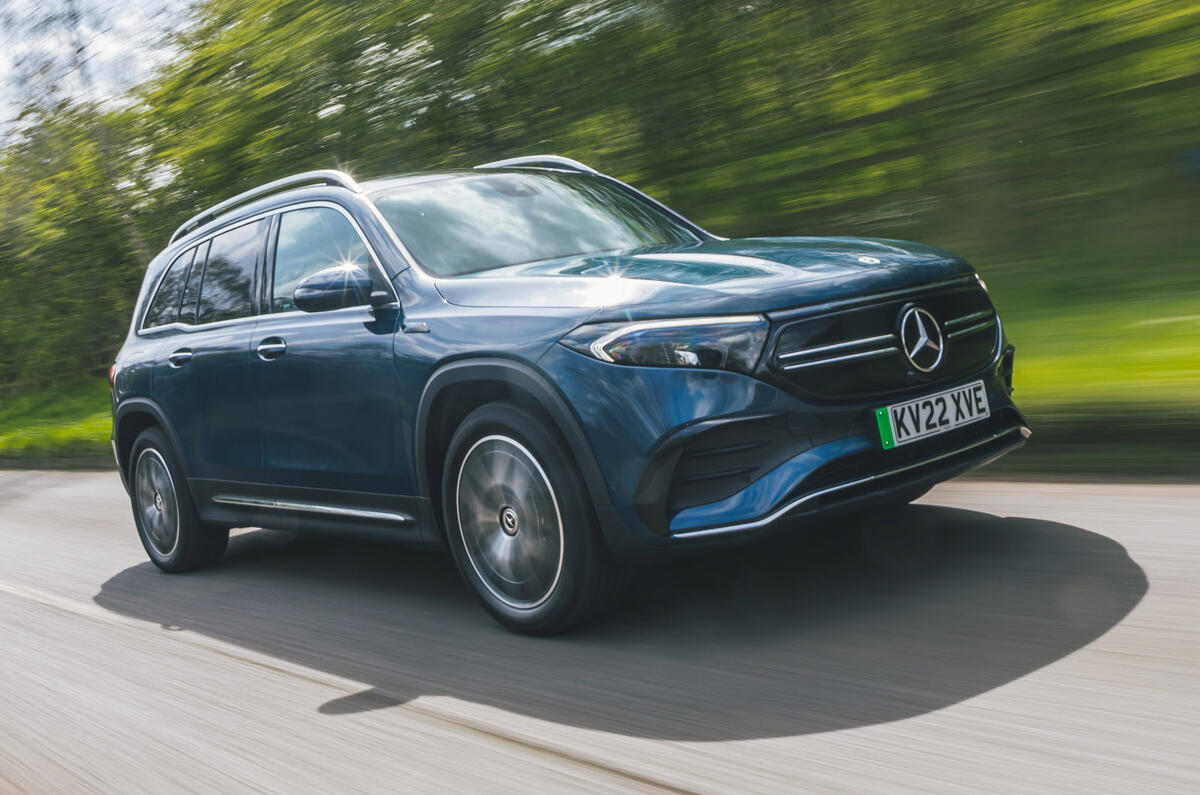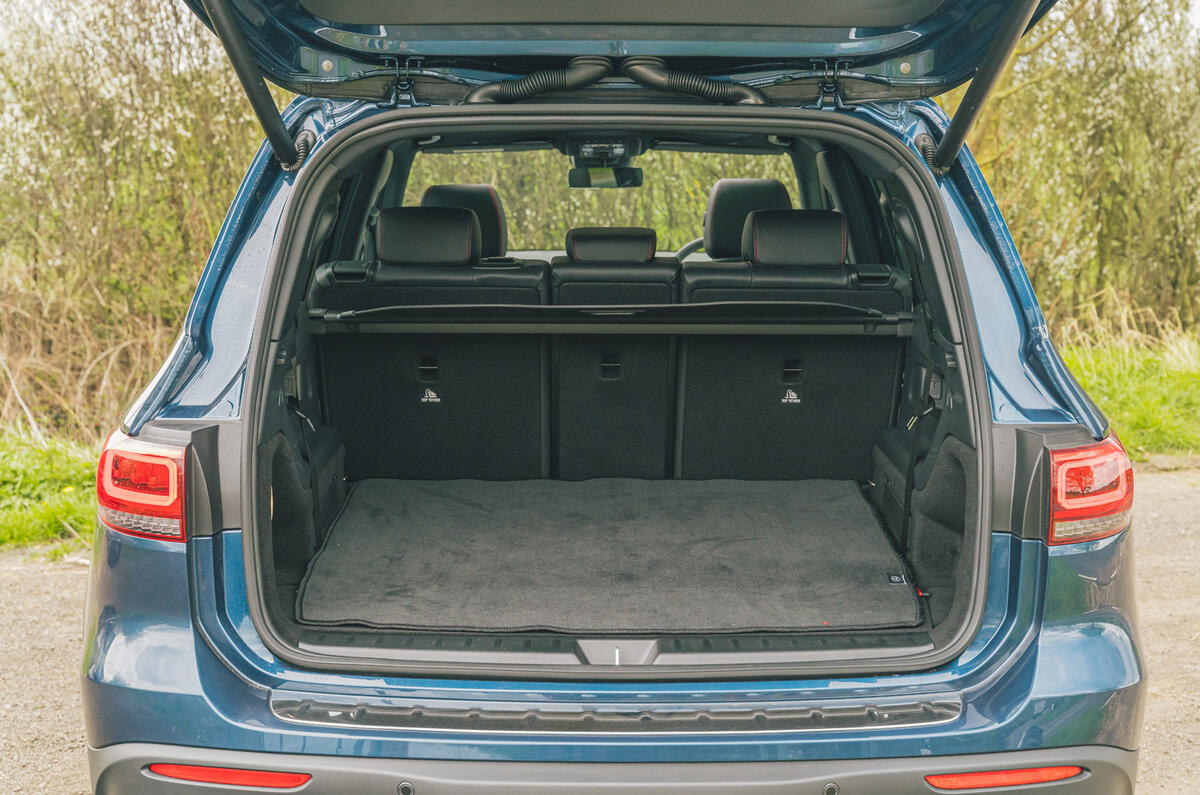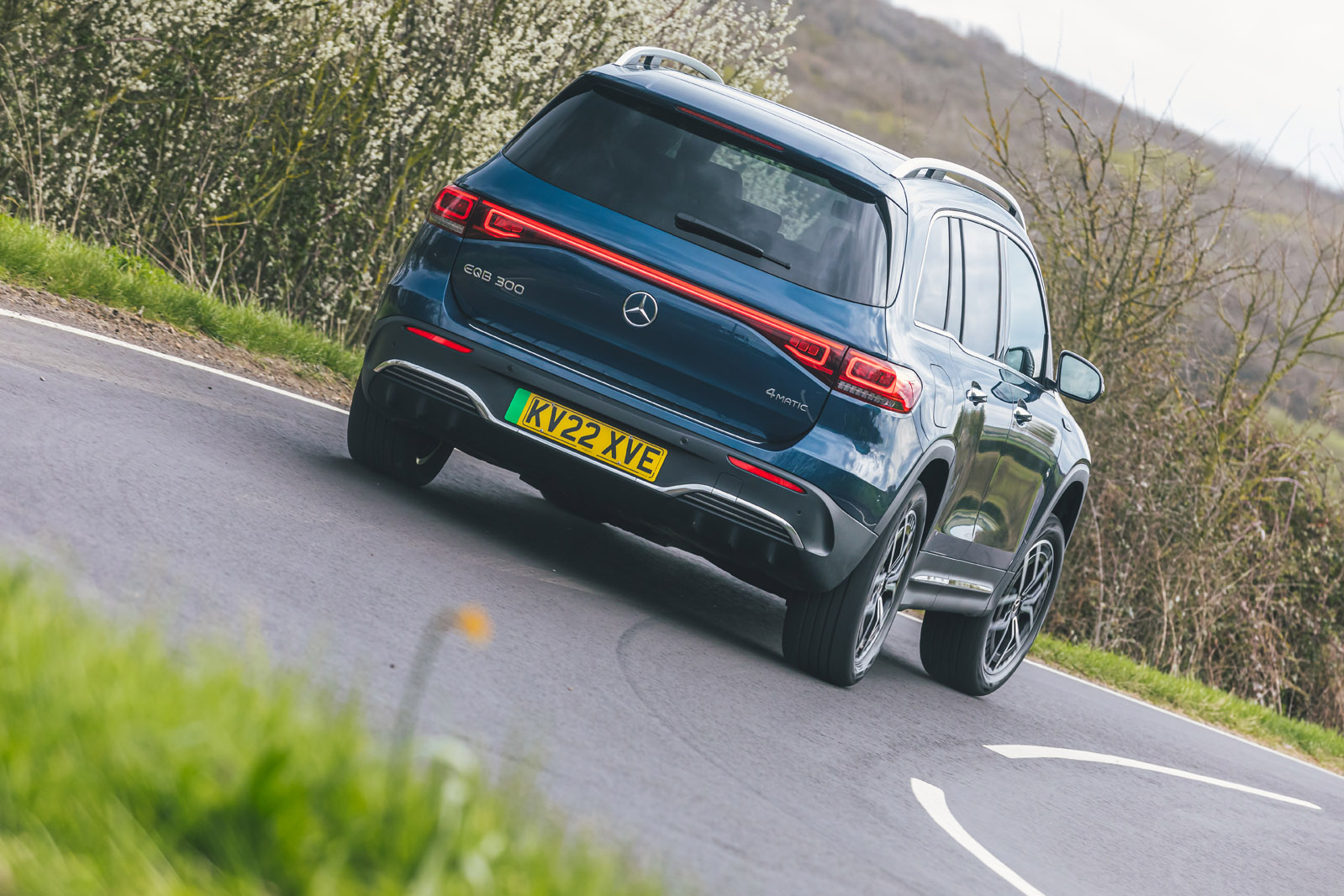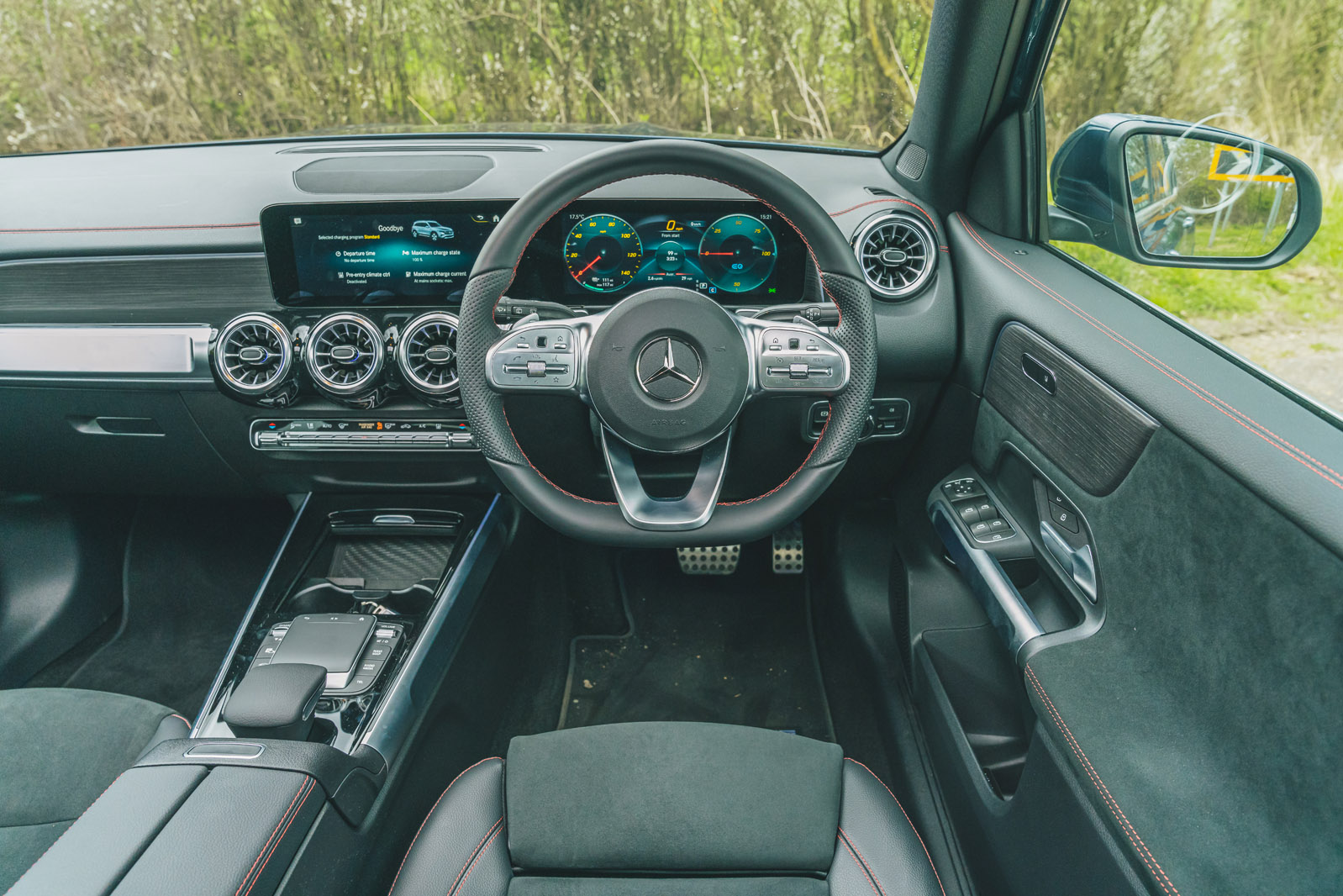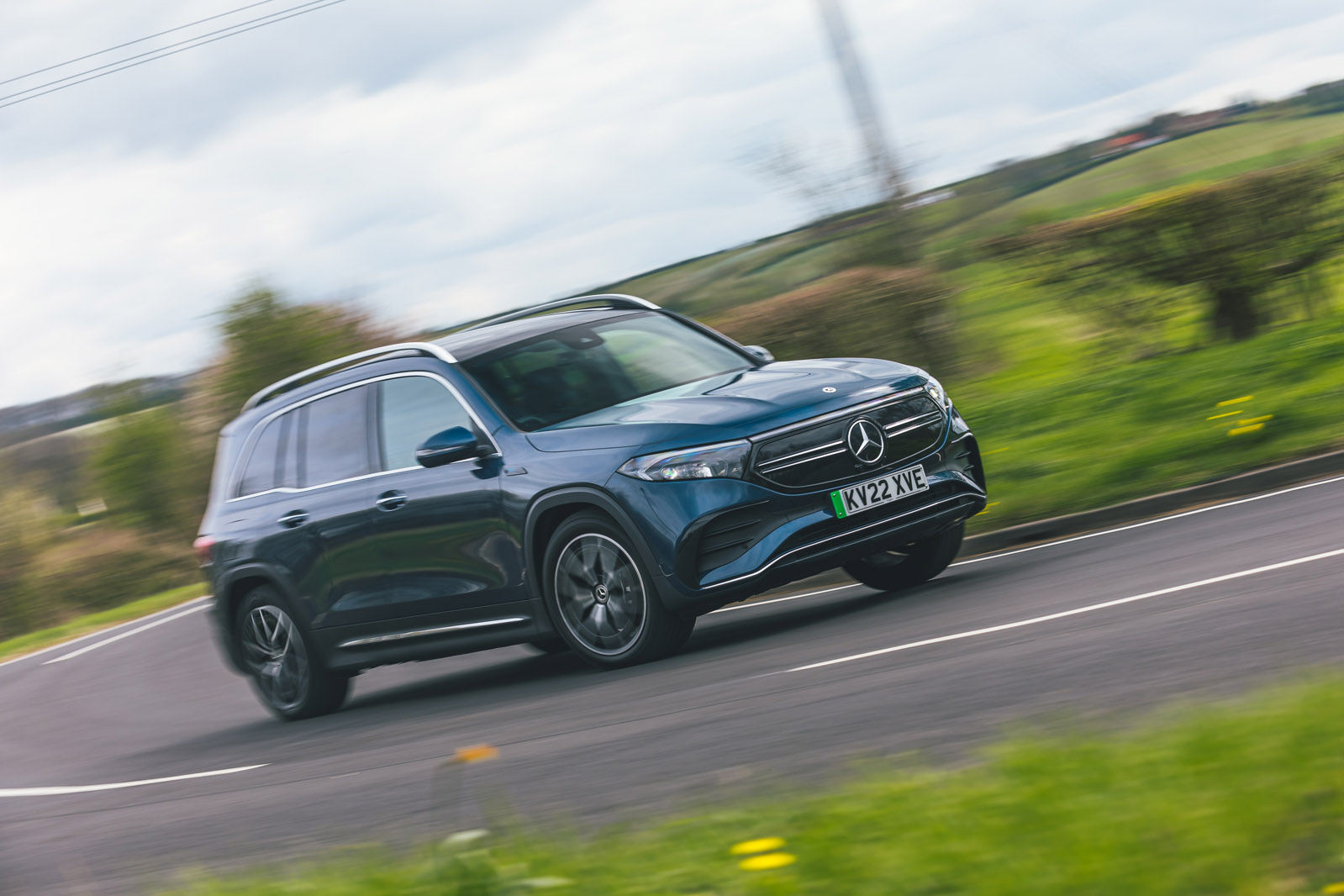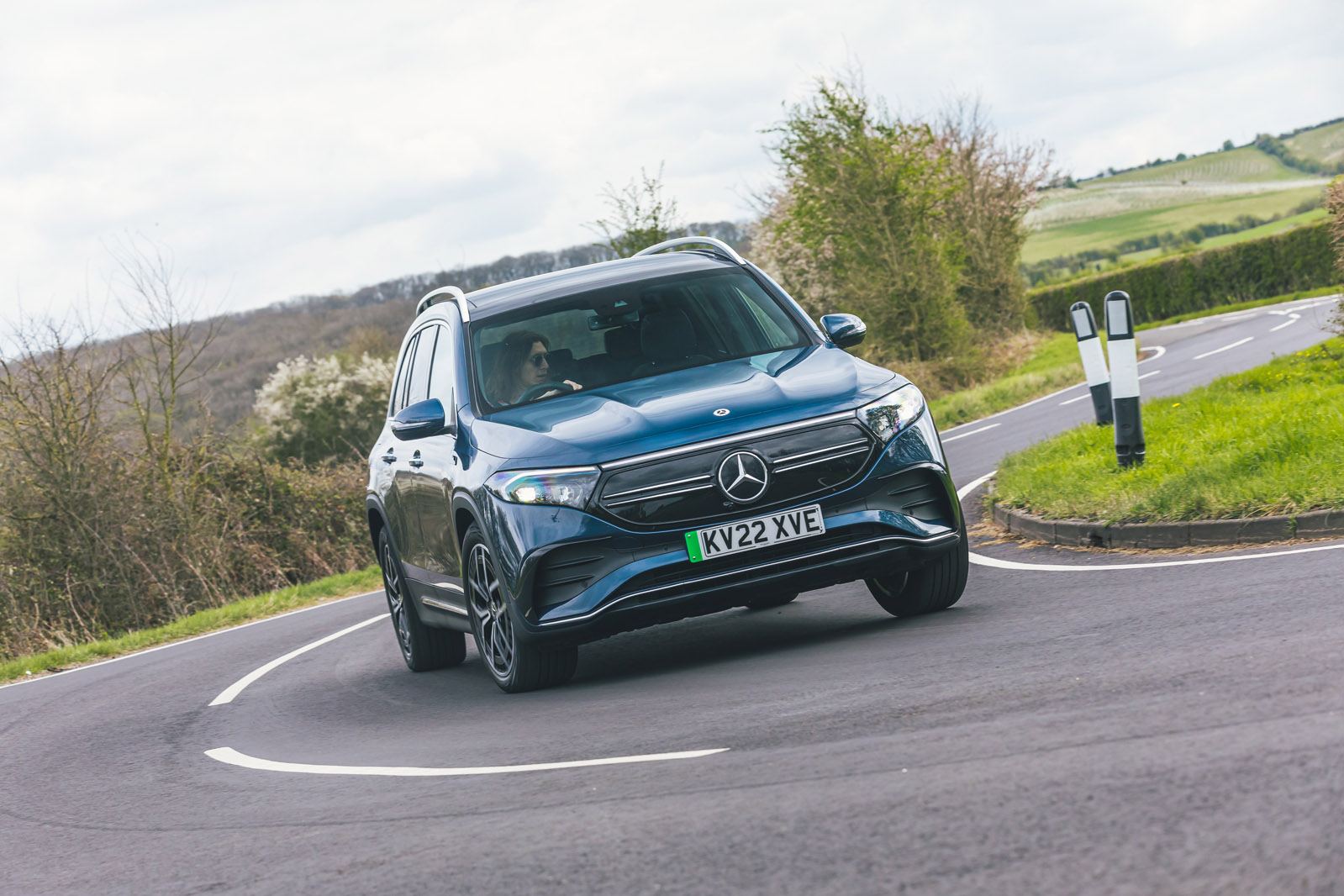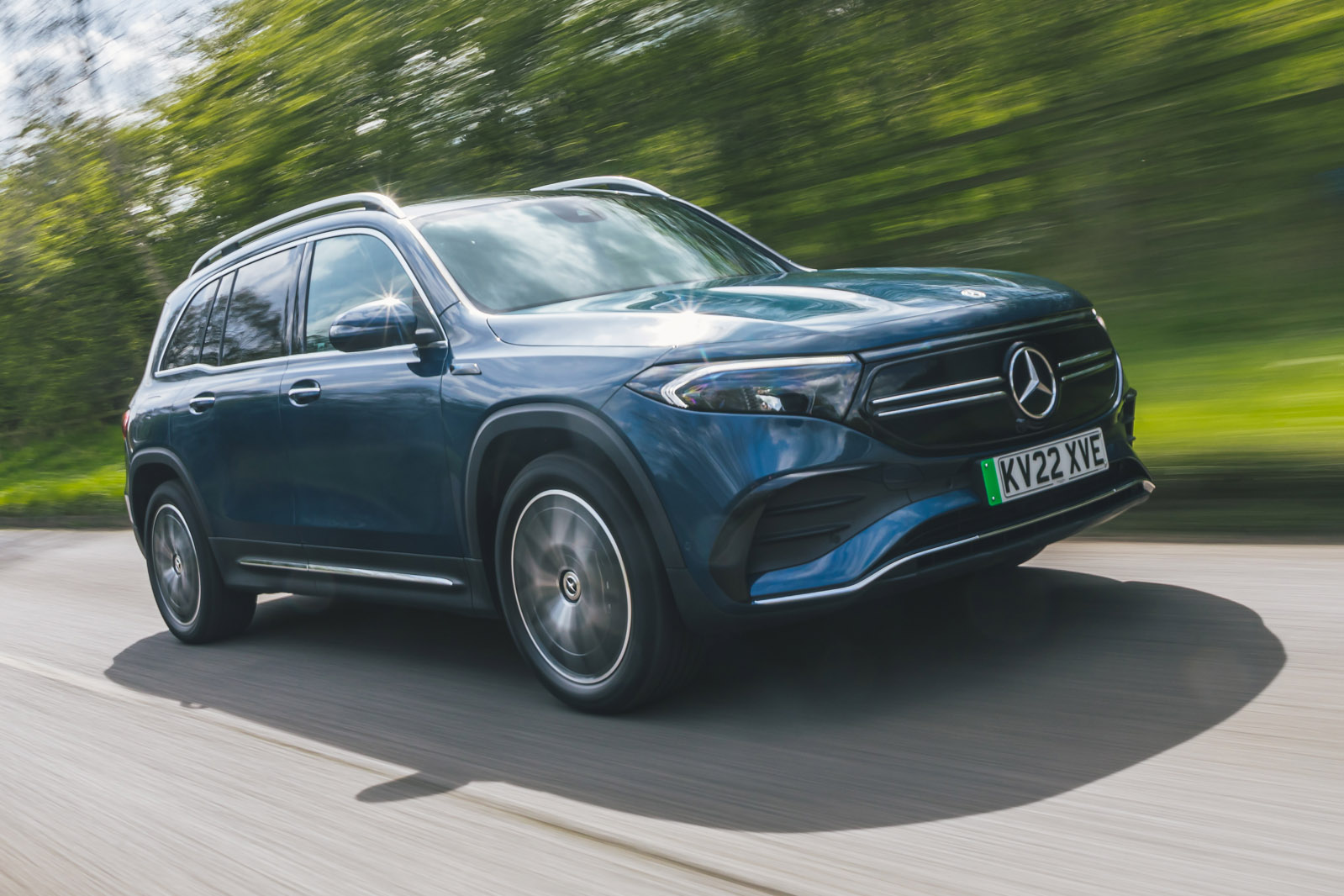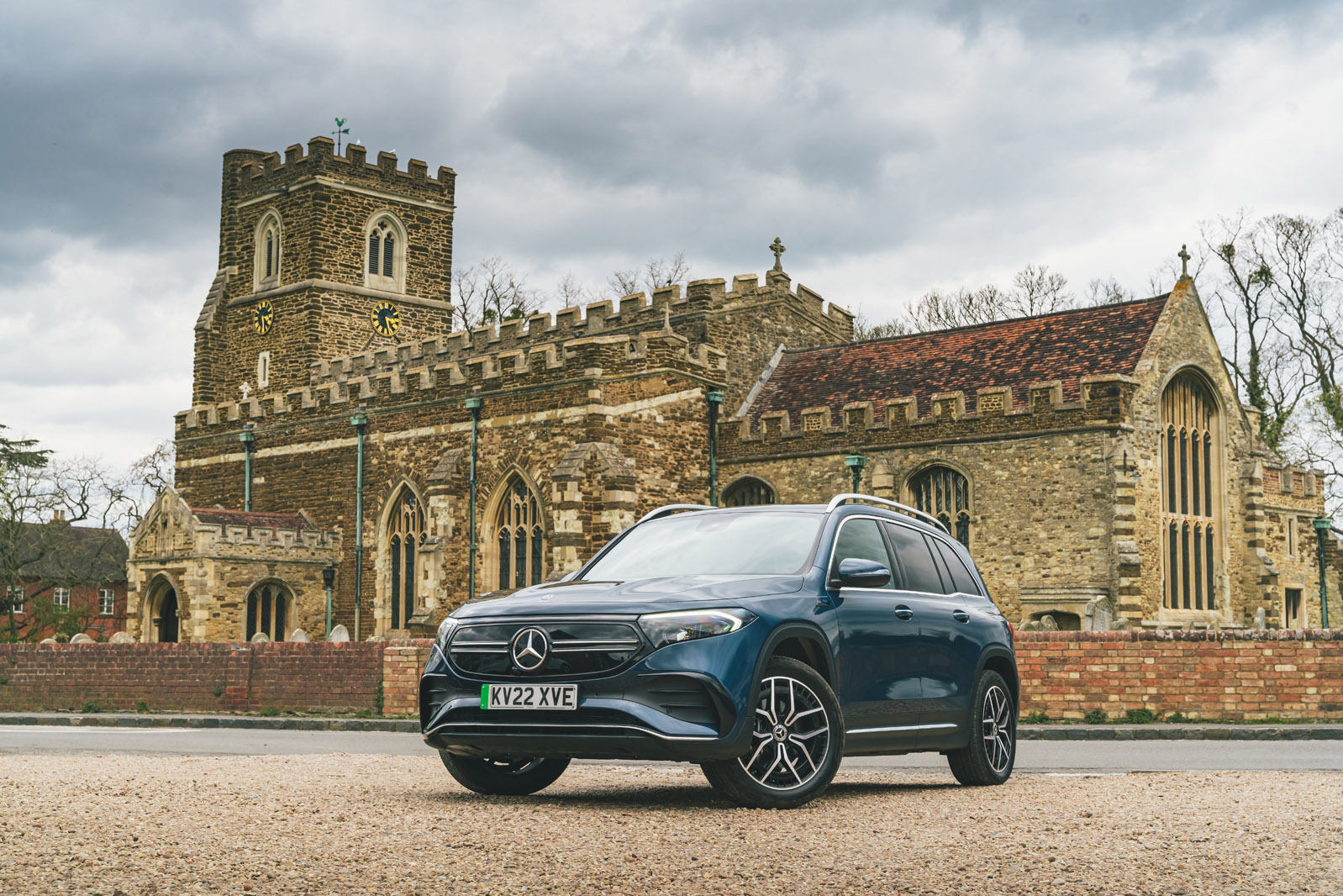The Mercedes EQB offering in the UK includes seven seats, across the usual three rows, as standard in all trim levels. Delve into the detail of the product description, however, and you will find an admission that, just as in most smaller MPVs and SUVs, the rearmost chairs are for smaller passengers only.
Mercedes itself puts the height limit for row three at 1.65m (just under 5ft 6in), which seems an accurate appraisal of the available space. Third-row head room, as we measured it, is a broadly class-competitive 840mm (Mercedes GLB 840mm, Skoda Kodiaq 820mm, Volkswagen Touran 880mm).
Access to the third row is reasonable enough for children and younger teenagers, with second-row seats that tilt forwards to admit passengers behind them, and can also slide by up to 140mm so that a little leg room from the middle row can be traded rearwards. Isofix child seat anchorages appear on four out of the five rearmost seats, something that is quite rare even among larger seven-seaters. Meanwhile, in two-seat mode, the car’s five back chairs fold flat, granting an easy loading surface that extends to 1.8m in length up to the front seatbacks (Kodiaq 1.9m).
The view from the driver’s seat is reassuringly good, with a high-rising glasshouse providing good visibility in all directions. Mercedes’ standard-fit seats offer supportive cushions with extendable sections for the longer of leg, and the EQB’s manually adjustable steering column is easy to position to your liking.
Material cabin quality both looks and feels good, with Mercedes’ habitual application of satin-finish chrome, glossy black plastic and colour-selectable ambient lighting all present and correct for those who like a ritzy, glitzy luxury ambience with plenty of shimmer and flash about it.
Oddment storage is generously supplied in the door bins and centre console, with both of the central storage areas usefully covered with lids, should you want to conceal any contents from passers-by. All things considered, this is a practical and flexible interior for larger families, as well as an inviting one. It may not be the most spacious seven-seater for its price, but the combination of outward size, inward space and versatility that it offers is a strong selling point.
Mercedes-Benz EQB infotainment and sat-nav
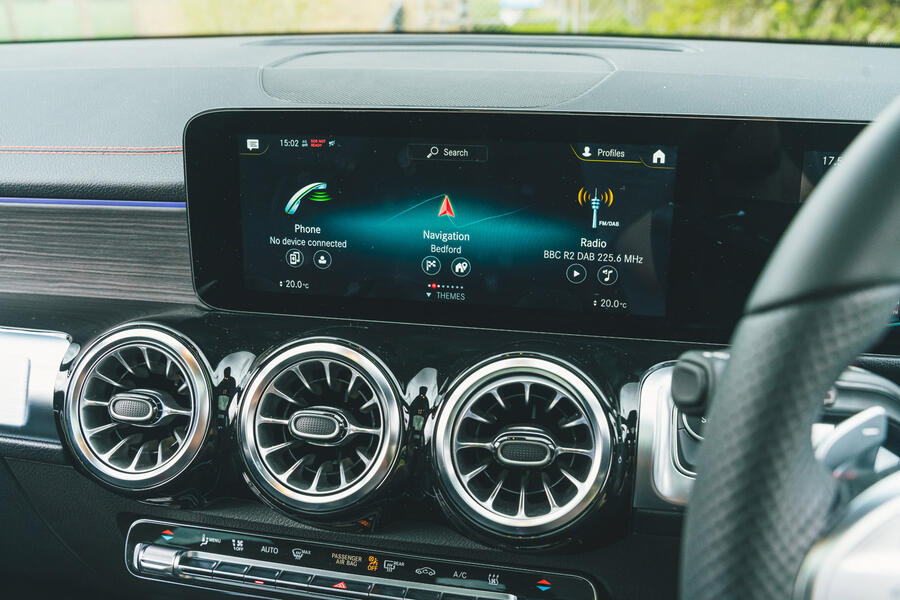
The MBUX infotainment system in the EQB is made up of two side-by-side 10.0in displays located behind and alongside the car’s primary controls, which are integrated as if they were one widescreen console. Half of it serves as an instrument console, the other half for navigation, information and entertainment. A head-up display is added on range-topping Launch Edition cars.
The screens are fairly easy to navigate, with Mercedes still offering a tactile input device for the infotainment system by the centre armrest, which you can use to scroll a cursor around while you drive without needing an outstretched hand on the screen itself. Alternatively, the left-hand thumb-pad console on the steering wheel performs the same function, and saves a lot of swiping and jabbing at an increasingly smudgy screen.
The car’s menus are quickly learned, with Mercedes’ shortcut keys helping to find a specific function within two or three inputs. Smartphone mirroring for Apple and Android handsets is standard fit, but the fitted navigation is well worth using and good at finding charging points along a set route.


